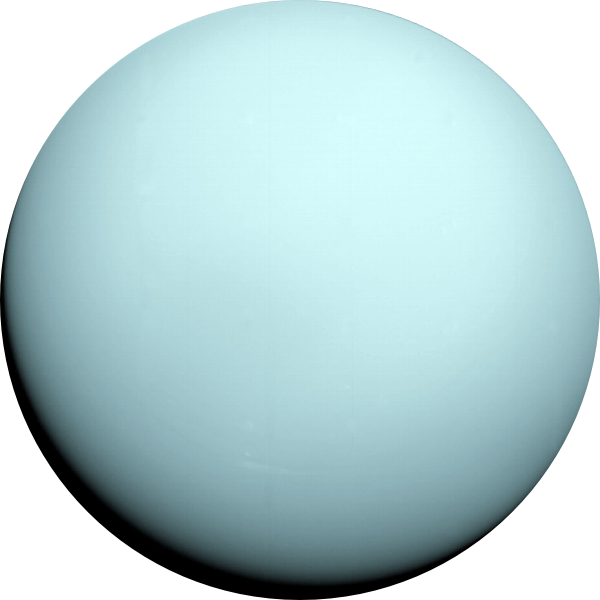Uranus


Planet Profile |
|
|---|---|
| Mass (kg) | 8.68 x 1025 |
| Diameter (km) | 51118 |
| Mean density (kg/m3) | 1290 |
| Escape velocity (m/s) | 21300 |
| Average distance from Sun | 19.19 AU (2,870,972,200 km) |
| Rotation period (length of day in Earth days) | 0.72 (17.9 Earth hours)(retrograde) |
| Revolution period (length of year in Earth days) | 30,685 (84 Earth years) |
| Obliquity (tilt of axis degrees) | 97.9 |
| Orbit inclination (degrees) | 0.77 |
| Mean temperature (K) | 59 |
| Atmospheric components |
|
| Rings |
|